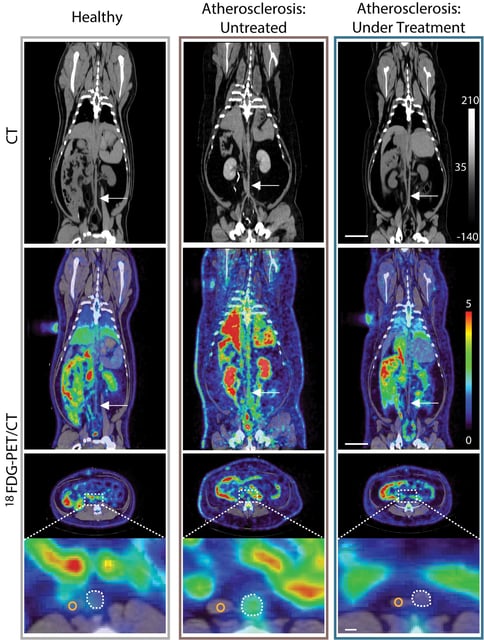Overview
- 18FDG-PET signal reflects glycolytic activity across macrophages, lymphocytes and smooth muscle cells within atherosclerotic plaques.
- Researchers induced partial plaque regression in genetically modified animal models using a combined diet-drug intervention.
- Reductions in PET signal mirrored decreased expression of glycolytic enzyme genes across multiple vascular cell types.
- Findings challenge the view of FDG uptake as solely an inflammation marker by linking it directly to cellular metabolism.
- Authors call for clinical studies to validate 18FDG-PET as an accessible tool for tracking treatment efficacy and guiding new therapy development.
